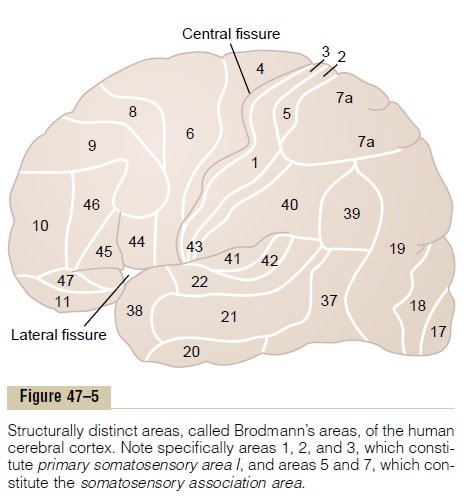Chapter: Medical Physiology: Somatic Sensations: I. General Organization, the Tactile and Position Senses
Somatosensory Association Areas
Somatosensory Association Areas
Brodmann’s areas 5 and 7 of the cerebral cortex, located in the parietal cortex behind somatosensory area I (see Figure 47–5), play important roles in deci-phering deeper meanings of the sensory information in the somatosensory areas. Therefore, these areas are called somatosensory association areas.
Electrical stimulation in a somatosensory associa-tion area can occasionally cause an awake person to experience a complex body sensation, sometimes even the “feeling” of an object such as a knife or a ball. Therefore, it seems clear that the somatosensory asso-ciation area combines information arriving from mul-tiple points in the primary somatosensory area to decipher its meaning. This also fits with the anatomi-cal arrangement of the neuronal tracts that enter the somatosensory association area because it receives signals from (1) somatosensory area I, (2) the ven-trobasal nuclei of the thalamus, (3) other areas of the thalamus, (4) the visual cortex, and (5) the auditory cortex.

Effect of Removing the Somatosensory Association Area— Amorphosynthesis. When the somatosensory associationarea is removed on one side of the brain, the person loses ability to recognize complex objects and complex forms felt on the opposite side of the body. In addi-tion, he or she loses most of the sense of form of his or her own body or body parts on the opposite side. In fact, the person is mainly oblivious to the opposite side of the body—that is, forgets that it is there. Therefore, he or she also often forgets to use the other side for motor functions as well. Likewise, when feeling objects, the person tends to recognize only one side of the object and forgets that the other side even exists. This complex sensory deficit is called amorphosynthesis.
Related Topics